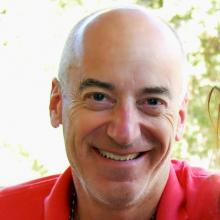
Reginald Penner is Chancellor’s Professor and Chairman in the Department of Chemistry at the University of California, Irvine (UCI). At UCI, he has appointments in the Department of Chemistry and the Department of Chemical Engineering and Materials Science. Professor Penner attended Gustavus Adolphus College in Saint Peter, Minnesota where he obtained B.A. degrees in Chemistry and Biology in 1983. He studied at Texas A&M University beginning in 1983 with Professor Charles R. Martin and he received a Ph.D. in Chemistry in 1987. He proceeded to postdoctoral appointments at Stanford University and Caltech working with Professor Nate Lewis, before being appointed at UCI in 1990. Professor Penner is an electrochemist whose research group develops methods based upon electrodeposition for making nanomaterials, such as nanowires, composed of metals and semiconductors. With his students, he has more than 150 research publications to date. He is an A.P. Sloan Fellow, a Camille and Henry Dreyfus Teacher-Scholar, an NSF and ONR Young Investigator, and a Fellow of the American Association for the Advancement of Science (AAAS). He received the 2009 Faraday Medal from the Royal Society of Chemistry of the UK.





